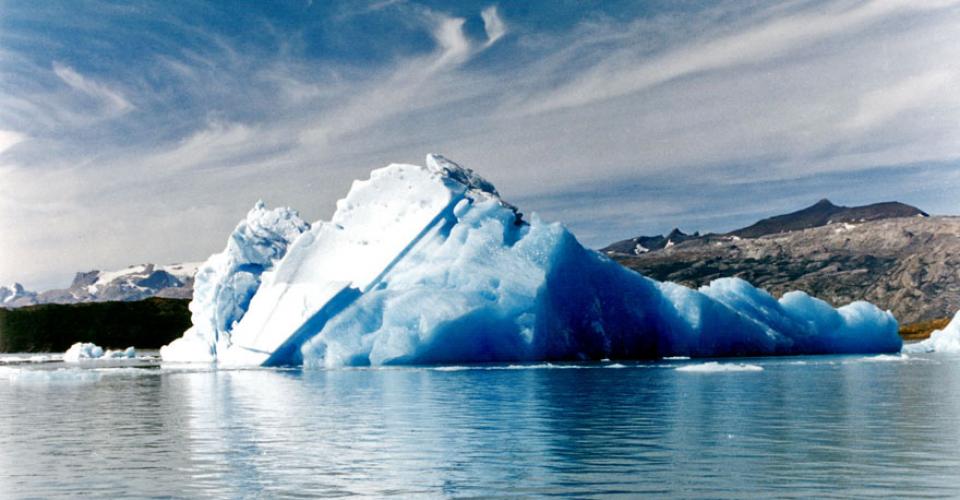An Australian perspective on teaching Nature of Science
17/11/2013Dispatch from the Australian Curriculum Studies Association Conference (ACSA), 2013, introduced by Kamo High School science teacher, Hazel McIntosh.
 I attended the Australian Curriculum Studies Association conference in Darwin in October this year and felt very much at home. One of their cross-curricular priorities is sustainability, and so with numerous speakers talking about addressing the nature of science through indigenous knowledge and climate change, it began to feel very comfortably like a science teachers conference.
I attended the Australian Curriculum Studies Association conference in Darwin in October this year and felt very much at home. One of their cross-curricular priorities is sustainability, and so with numerous speakers talking about addressing the nature of science through indigenous knowledge and climate change, it began to feel very comfortably like a science teachers conference.
The report written for PPTA on this conference makes interesting reading.
I was very fortunate to be given a DVD containing a large number of resources made for class room teachers to use. Although they are very specifically related to the indigenous peoples of Australia some of the ideas using nature of science concepts are readily adaptable to our situation here in New Zealand.
I have passed this on and hope it can be of some use. I do wish we had the level of support available to Australian teachers, but I'm greatly relieved not to have their problems.
– Hazel McIntosh, Kamo High School
What follows is a science-focused extract from the report written by the PPTA delegates to the conference.
Introduction
This year, the biennial conference of ACSA was held in Darwin, Northern Territory. Darwin was a new experience for all of the PPTA delegation: Hazel McIntosh, Jill Gray, Charis Rata, Martin Henry, and Judie Alison. The conference this year was centred on the cross-curriculum priorities of the new Australian curriculum, which are:
- Aboriginal and Torres Strait Islander histories and cultures (abbreviated here as A&TSI).
- Asia and Australia’s engagement with Asia.
- Sustainability.
There could not have been a more appropriate location for a conference on these priorities, given the Northern Territory’s huge indigenous population, its proximity to Asia, and its major environmental challenges.
In essence, the cross-curriculum priorities of the Australian curriculum are the equivalent of the principles, including the future-focused themes, in The New Zealand curriculum, but there is probably more emphasis on them in Australia where there is a lot of talk of the curriculum being three-dimensional:
- Learning areas.
- General capabilities (our key competencies).
- Cross-curriculum priorities.
Unlike New Zealand, where only the front end of the curriculum is mandated, the Australians have started by mandating the learning areas, with four having been finalised and the rest now under way. The general capabilities and cross-curriculum priorities are then linked in as appropriate to the achievement objectives (though they call them something different) of the learning areas. The whole thing is digital, so that they are icons at various points in the learning areas that will eventually take you to other material, including examples of units that integrate the different elements. Ultimately, teachers will be able to enter the curriculum via a general capability or a cross-curriculum priority instead, but that doesn’t seem to be the case yet. You can have a look at all this by going to the website www.australiancurriculum.edu.au and choosing a curriculum area.
Some of the science presentations are described below:
Eelco Rohling, Professor (Ocean and Climate Change), Australian National University, Canberra – Understanding sustainability (Judie and Hazel)
Rohling’s purpose in this presentation was to suggest how climate change needed to be presented to students through the learning areas or the CCP, and in fact, what all citizens needed to know. He argued that teachers should educate, not preach, to enable students to develop their own informed opinions. Sustainability integrates the physical/life sciences and the humanities – e.g. economics.
The big issue is to show students how to distinguish between natural variability of climate and anomalous behaviour. The fundamentals of sustainability are:
- Out > in leads to depletion
- In = out leads to sustainability
- Out < in leads to the system replenishing itself.
He was pretty pessimistic about our ability to roll back climate change, and said we need solutions to optimise conditions as they are now. There have been some big environmental successes:
- Massive reduction in whaling, leading to the population recovering.
- Strict fisheries quotas in Europe prevented obliteration of the Atlantic cod.
- International CFC ban stopped ozone depletion.
- Improved waste treatment cleaned up surface waters in Europe, USA, etc.
- Lead removal from fuels stopped massive environmental pollution.
The big climate change and ocean issues that students need to know about are:
- Climate change – energy balance, climate sensitivity, global versus regional trends.
- Ocean acidification with CO2 (40 per cent of atmospheric CO2 ends up in the ocean), carbonate formation, impacts.
- Ocean-climate interactions – evaporation/condensation, El Nino, monsoons, hurricanes and mid-latitude storms.
- Resources from the sea – wave and tide energy, mineral resources, fisheries.
- Emerging challenges – disappearing Arctic sea ice, marine mineral resource exploitation, marine biological resource exploitation.
- Earth as a system – nutrients/weathering/rock cycle, natural variability, anthropogenic changes v. natural changes.
He then went into an explanation of the Greenhouse Effect that stretched me somewhat. CO2 in the atmosphere interferes with outgoing long-wave radiation from the earth so that the earth warms up. It is out of balance with short-wave radiation from the sun. The natural Greenhouse Effect keeps the earth 33ºC warmer than it would otherwise be – i.e. if there was no natural Greenhouse Effect, it would be -18ºC, with it, the average is 15ºC. If there is more CO2, the average earth temperature rises beyond 15ºC.
Since the industrial revolution:
- Atmospheric CO2 has risen by almost 40%
- Atmospheric methane has increased by more than 100%
- Atmospheric nitrous oxide has also increased.
Exploring Sustainability through the Australian Curriculum: Mathematics – Judy Anderson, University of Sydney (Jill)
Though the subtitle was mathematics, the ideas and websites given could be used to develop rich problem solving and reasoning tasks for students could equally be used in science and social science classrooms as well.
Here is a list of websites with a brief explanation:
- Visualising populations – Stan’s Café (UK) (uses rice to show). www.stanscafe.co.uk/project-of-all-the-people.html#videos
- USA Population Education (www.populationeducation.org).
- USA World of 7Billion. This has teacher resources and lesson plans. www.Worldof7Billion.org
- Gapminder: www.gapminder.org/videos/200-years-that-changed-the-world-bbc/
- Miniature Earth Project. www.miniature-earth.com
- If the world were a village of 100 people http://www.geography.about.com/od/obtainpopulationdata/a/worldvillage.htm and www.youtube.com/watch?v=jNnb08x4JAY This is also in book form: If the World were a Village of 100 people By David J Smith.
Impromptu additional workshop following keynote address on Understanding Sustainability – Professor Eelco J. Rohling, Research School of Earth Sciences (Hazel)
Both the keynote (see above) and this workshop were more suited to a science teachers’ conference than a curriculum conference. I guess the speaker was there because sustainability is a priority on the curriculum but his talk did rather stand out like a sore thumb.
I enjoyed him hugely. Climate scientists, and I’ve met quite a few, look to be quite nice normal people. Generally, they don’t look scary but they say the most terrifying things. Professor Rohling was no different. Asked why the facts he was presenting were not more widely known, he shrugged and pulled a face. Apparently it is not unknown for scientists and their families to be threatened by powerful corporations. Another frightening thing he had to say.
Uncharted territory? Think again – mapping sustainability across the Northern Territory – Louse Nicholas and Ann Goodman, Department of Education and Children’s Services, NT (Hazel)
This turned out to be about establishing sustainable gardens with support from mainly middle class parents in urban primary schools. Lots of hand outs were given out on how to grow some very odd plants and then how to prepare them to eat once grown. A kind of calendar on what to plant when in the Darwin region was interesting but irrelevant. Nice hippy presenters and I was given a collapsible recycled water bottle.
Sustainable futures – Andy Stone, Australian Science and Mathematics School,SA (Hazel)
Andy was very engaging and enthusiastic, and he went on to be awarded a prestigious teaching award during the conference. The whole focus of the school from its inception was in linking the science and maths curriculum. Andy was a founder member of the staff and has never taught anywhere else.
It’s a school of 360 with a teaching staff of 35 based on the Flinders university campus. It recruits in Adelaide and the surrounding area and its programmes are all interdisciplinary and inquiry-based with students controlling their learning. It did sound like the new open plan high tech schools we are now developing with their open plan learning spaces. They have a flexible timetable with staffing negotiated on a needs basis for each actual teaching session. Apart from that, staff have far more of a facilitatory, mentoring role, the philosophy being that real world problems like climate change or stem cell research do not fit into disciplinary boxes and that we no longer need to have knowledge, we have to use knowledge. No arguments there! Disciplinary skills remain important but are regarded as tools to work at a higher level.
The classes range across years 10 to 12, there is a semester approach and 90 per cent of students are expected to go on to university. Planning for pathways beyond university is a goal but data collection is problematic.
He went on to plan my end of year unit by describing a project involving designing a sustainable house. I plan to share that with my subject association. Personally, I felt I didn’t want to teach in this school, I wanted very much to be a pupil there!
Indigenous perspectives in the Science Curriculum – Joe Sambono, Education Queensland (Hazel)
Talk about saving the best till last! This was a fantastic presentation of work done to actually support the classroom teacher to meet the priority of addressing Aboriginal and Torres Strait Islander knowledge and culture in practice in the classroom.
So this is what it looks like in the classroom! The workshop was totally specific both to science teachers and Australia, completely irrelevant to me but what a treat! I got a CD I intend to send to my subject association.
Why aren’t we supported like this when the Ministry decide to make something a compliance requirement?
There did seem to me to be one rather glaring problem though. Much of the knowledge westerners are so keen to share is sacred to the people whose culture it is and they don’t even share it within different sexes in the same tribe.
– Reports put together by Judie Alison (PPTA), Hazel McIntosh (Kamo High School), and Jill Gray (Havelock North High School).

























Post your comment
Comments
No one has commented on this page yet.
RSS feed for comments on this page | RSS feed for all comments